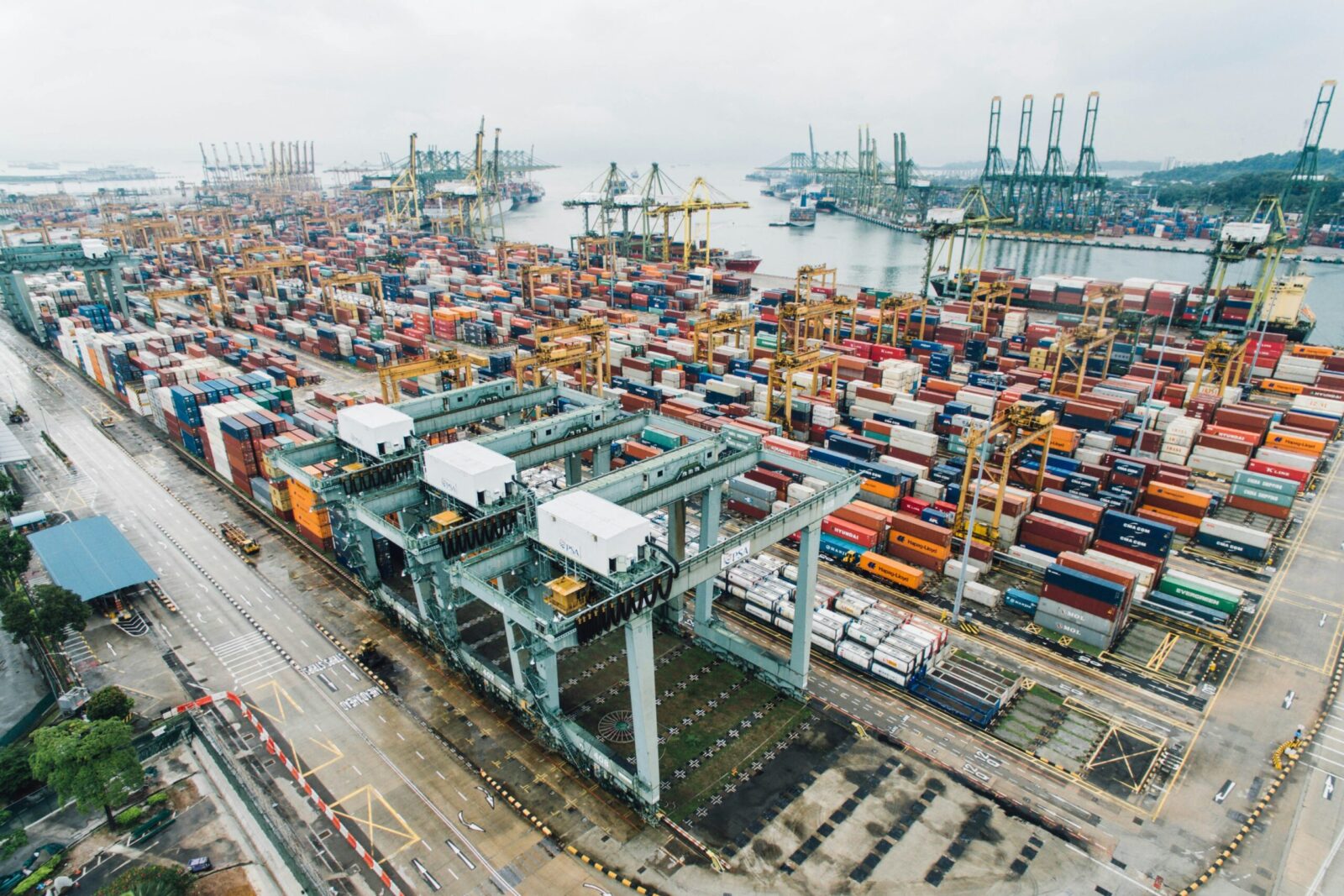
Lean Logistics: 5 Proven Methods to Manage It Efficiently
Lean logistics applies lean management to supply chain performance. Lean Logistics eliminates non-value-added procedures to improve commodity flow and cut...

Get 20€ off on your first order!
Today’s complex and turbulent business environment requires effective supply chain risk management. As global supply networks become more intertwined, disruptions become more likely, therefore organisations must reduce risks. This paper covers seven supply chain risk management measures, including advanced planning, technical investments, risk awareness, and financial stability. These techniques may protect operations, preserve continuity, and keep organisations competitive in unpredictable times.
The supply chain optimisation method begins with a thorough anticipated demand study. Based on the forecast, a production and inventory plan is created. The exercise covers raw resources, manufacturing, transportation, and distribution. Organisations could also consider omnichannel strategies to improve e-commerce integration at this stage.
Most firms use professional services providers or consultants to make technological and organisational improvements for real-world effects.
A good supply chain optimisation approach involves three phases:
This phase covers network design procedures including warehouse placement, product movement to and from suppliers and consumers, and all strategic manufacturing operations objectives like demand forecasting, supply setup, planning, and scheduling.
This phase optimises supplier-to-customer product, service, and information delivery by defining a strategy deployment, planning inventories, and coordinating assets. This phase balances supply and demand.
This phase covers execution-based applications and systems such warehouse and inventory management, transportation facility and efficiency management, and international trade management. Execution-based supply chain support systems such real-time decision-based assistance, supply chain visibility, and order placement management are also examined.
Supply chains are dynamic ecosystems. Risk and uncertainty in supply chain operations increase as it expands. Performance variables may be personal, external, competition-driven, or environmental. Due to several circumstances, many supply chain models exist. Organisations adopt models depending on business-specific supply chain optimisation concerns.
An organization’s supply chain optimisation model typically includes these elements:
These factors help a corporation to solve most supply chain optimisation problems and establish a well-rounded, seamless operation that works effectively with all trade partners.
Quality supply chain optimisation software has various benefits for businesses:
Supply chain optimisation cuts wasteful expenditures, optimising corporate processes. You may also automate or remove all repetitive or inefficient operations. Meeting client demands with timely, precise delivery might be prioritised. Supply chain cost optimisation reduces inventory, freeing up finances to avoid goods from expiring. Optimisation of delivery, logistics, and warehousing may reduce supply chain infrastructure costs.
Managers can track all operations and speed up supply chain procedures with supply chain optimisation solutions. The customer may be more engaged and have a better experience. Orders are delivered on schedule and the organisation becomes more customer-focused. A shorter investment-to-return-on-investment cycle and faster invoice payment boost client loyalty.
Digitising the supply chain provides real-time analytics. Evaluation of suppliers’ performance helps enhance performance and rewards it when needed. It establishes a continual supplier performance improvement framework important to strategic sourcing.
The organisational ecosystem includes suppliers, partners, vendors, and their interfaces. Having these businesses in one supply chain optimisation system improves collaboration and innovation.
Every stakeholder can access current information and make wiser business choices as a team, improving supply chain continuity and reducing risks.
Supply chain optimisation software provides centralised management of all supply chain capabilities. Companies may gain insights into supply chain visibility, sales forecasting, cash flow management, customer loyalty, timely delivery, and credit control. Complete supply chain visibility allows transparent operations.
A supply chain’s quality management system includes raw material procurement and product delivery. Supply chain optimisation improves efficiency and waste reduction by introducing quality at each level. These methods also enable supply chain planning optimisation, maintaining quality throughout the process.
There are numerous supply chain optimisation methods:
Cost optimisation comprises short-term operational improvements and long-term transformations. Each supply chain cost category is examined for savings opportunities. Orders, payments, storage, delivery, and garbage might incur costs.
Inventory optimisation helps organisations determine the appropriate inventory level to sustain customer satisfaction and where to optimise throughout the supply chain. It quantifies demand-supply uncertainty using complex algorithms. This multi-level supply chain examination gives solutions. A corporation finds the least inventory needed across its supply chain network via supply chain inventory optimisation.
Network optimisation
Companies must continuously assess how their supply networks will adapt to change to remain ahead of the competition and maximise profits. Companies may assess their supply chain systems’ responses to various circumstances via network optimisation. Organisations can create strategic goals and choose the suitable suppliers based on this. Optimising supply chain networks should help companies implement supply chain plans at lower cost and risk.
Many supply chain optimisation software alternatives can maximise supply chain performance:
This model-based platform defines the worldwide supply chain ecosystem using AI and analytics. These powerful models offer platforms that cover every important component of the supply chain, from sourcing to production, distribution, and finance.
Digital integration, automation, and supply chain optimisation are provided by this platform. Processes determine how an organisation interacts with consumers, suppliers, and trading partners. Along with cost, digital transactions, speed, and productivity, it improves collaboration and current work methods. Companies may collaborate closely with partners to improve performance and commercial possibilities with comprehensive supply chain insight from a single platform.
This technology gives supply chain visibility and actionable analytics from B2B transactions. These insights help companies manage critical supply chain activities. Based on past data and current transaction flows, the program optimises results using predictive analytics. It can anticipate supplier and customer performance, improve trade partner performance, and boost revenue and profit.
Integrating embedded apps into supply chain optimisation platforms adds capability. Supplier management, order and invoice processing, and product catalogue management are possible with these programs. The ideal service provider offers a variety of complimentary apps that are straightforward to integrate into supply chain optimisation solutions.
In an ever-changing market, no single recipe guarantees success. However, organisations should consider five supply chain optimisation tips:
This is crucial for developing value chains or strategically assessing supply chains. When planning foreign procurement, businesses must consider global options. The optimal inventory levels for the supply chain process must be determined by manufacturers through several channels.
Companies should assess their carbon impact and become greener. Locally optimising infrastructure, assets, and technology investments is crucial when building a supply chain.
Many organisations overcommit. For optimal results, short, intensive work should be done in-house and long, repetitive tasks outsourced. This choice offers higher long-term value. Focussing on worker strengths may transform operations.
By strengthening demand data-based forecasting and inventory management between the manufacturer or supplier and retailer, organisations may minimise inventory and increase fulfilment rates and product availability at the point of purchase. Better collaboration leads to a lean supply chain, which boosts margins and profitability. Technology provides collaboration options like mining vast amounts of data and optimising tests in numerous industries using processing power and greater communication.
Mobile, cloud-based technology improves field sales, merchandising, and marketing. Brands may interact with consumers by providing information about provenance, origin, contents, and unique demand (perhaps connected to sustainability, localised content, or production methods).
A corporation can collect data via social media and point-of-sale. This data helps firms anticipate demand and trend changes. This insight lets the supply chain respond swiftly to a sales increase and optimise service and inventories. Multi-channel programs may manage and adjust supply chain forecasting and planning expectations and enable a responsive supply chain.
Strategic planning, technology, and constant attention are needed to mitigate supply chain risk. Companies may anticipate and minimise disruptions by investing in innovative technology, boosting risk awareness, optimising supplier relationships, and maintaining financial stability. Knowing and using these seven tactics can assist manage present risks and construct a robust and agile supply chain that can thrive in an uncertain global market.
Thank you! You've signed up for our newsletter.



















Lean logistics applies lean management to supply chain performance. Lean Logistics eliminates non-value-added procedures to improve commodity flow and cut...

Introduction Rapid technical breakthroughs and changing market conditions are shaping supply chain management. Businesses must adapt to these changes to...

Introduction Success in today’s fast-paced corporate climate requires efficient supply chain management. Lean supply chain management has become a valuable...

Lean logistics applies lean management to supply chain performance. Lean Logistics eliminates non-value-added procedures to improve commodity flow and cut...

Introduction Rapid technical breakthroughs and changing market conditions are shaping supply chain management. Businesses must adapt to these changes to...

Introduction Success in today’s fast-paced corporate climate requires efficient supply chain management. Lean supply chain management has become a valuable...
Get 20€ off on your first order!
Save 30% by buying directly from brands, and get an extra 10€ off orders over €100
Save 30% by buying directly form brands, and get an extra 10€ off orders over €100